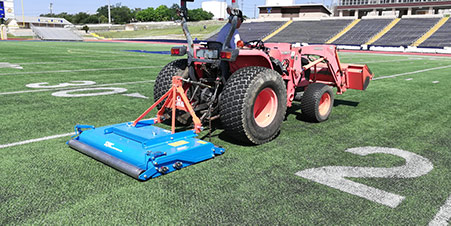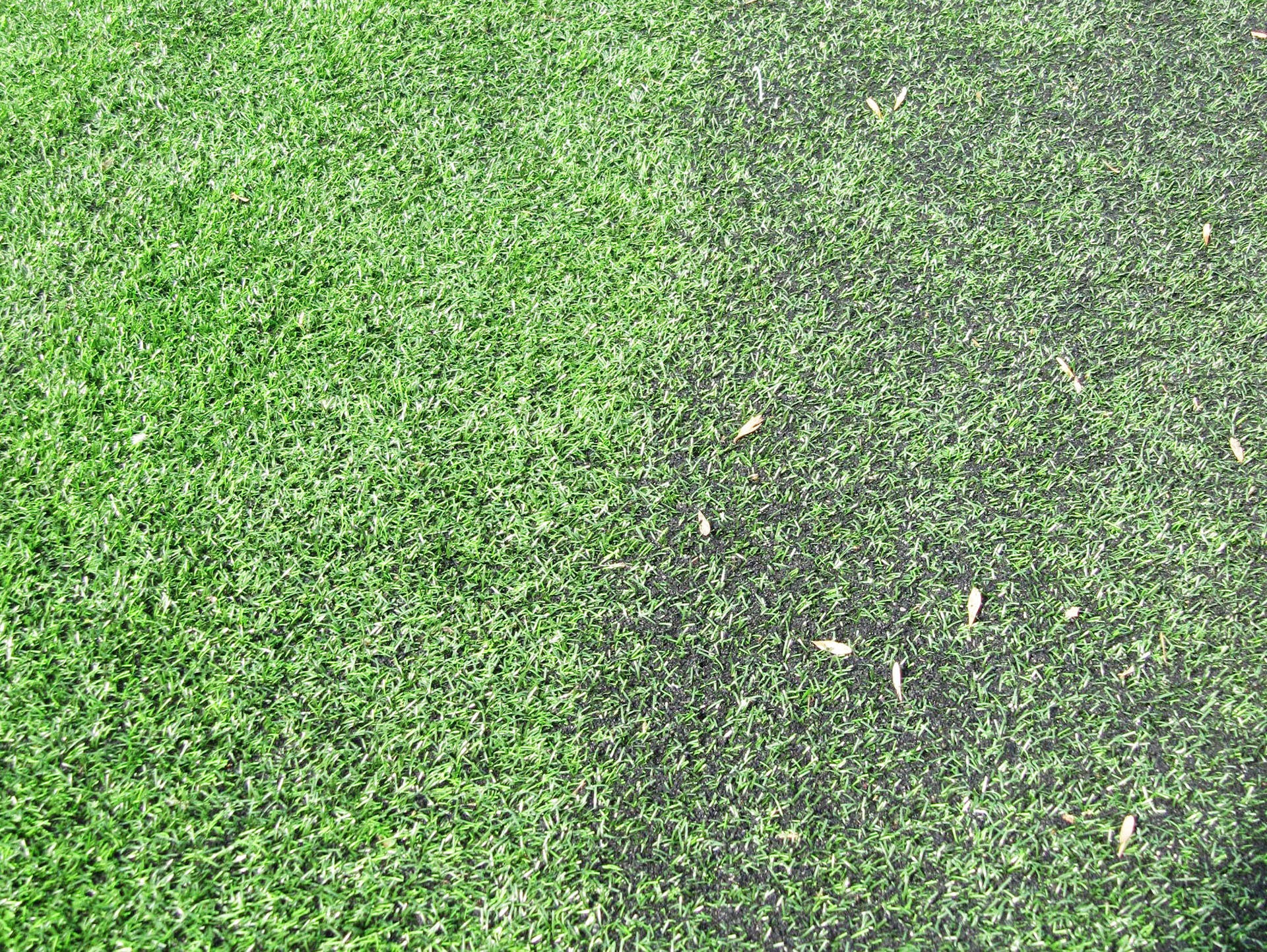Artificial Turf Deep Cleaning
/Artificial turf athletic fields require regular maintenance in order to remain safe and suitable for play.
When regularly used for any amount of time, a synthetic turf surface will begin to exhibit the following negative characteristics:
A hard surface that has lost a lot of it's cushion
Turf fibers no longer stand up, are laying over and are fraying/breaking off
Surface has developed slight undulations and is uneven in places because the infill material has moved around due to traffic patterns on the field
Trash and debris collects on the field and becomes buried in the turf infill, creating a safety hazard
In order to reverse the negative aspects of regular synthetic turf field use, a thorough deep cleaning needs to be performed regularly that involves decompaction and power cleaning.
NEED A QUOTE?
CALL TMC TODAY AT 1-800-292-1214
Decompaction
The crumb rubber infill material on a synthetic turf field helps support the turf fibers and provides cushion. Once the field starts to be used, the infill material becomes compacted with regular foot traffic and also from maintenance or other riding vehicles regularly driving on the field. The infill compaction makes the field harder. The harder the turf surface, the greater the amount of an impact is absorbed by an athlete's body during a fall and creates a much greater chance of an injury. To reverse the effects of hardness, regular decompaction of the infill material must be done. While regular grooming with a quality artificial turf groomer can help, a more thorough decompaction will be needed on a regular schedule each year. If a field has an excessive amount of frequent use, thorough decompaction needs to occur more often during the year.
A quality decompaction job provides the following benefits. 1) the infill is tilled/aerated and fluffed up on the surface, creating more pore space to restore the cushion/shock absorption qualities the layer was designed to help provide. 2) any trash or debris that has collected and been buried on the field is brought to the surface and is ready for removal.
If a field hasn't had a thorough decompaction or even a decent grooming, the amount of trash and debris buried and trapped in the infill is staggering. Typical trash/debris uncovered on most synthetic surfaces: tons of small metal objects, bits of metal, small rocks, shoelaces, sunflower seeds, bobby pins, hair barrettes, fingernails, spent starter pistol shells, track cleats and much much more.
Power Cleaning
After decompaction, an artificial turf field needs to be thoroughly power cleaned. Performing an intensive sweeping procedure will remove the trash and debris sitting on top of the field. Sifting the infill swept from the surface allows the trash to be collected and discarded and the infill put back down on the field surface in a uniform manner. Any small undulations or uneven areas of infill will be corrected since it's being screened and sifted and dropped evenly back to the surface. Adding a vacuum and filter to the operation allows even the really gross fine particles of dust and debris to be removed from the artificial turf, as well. The result of this routine is a cleaner surface free of trash with a softer and safer infill layer with any high and low areas of infill normalized out with the turf fibers standing up and ready for play.
It's very important that the turf fibers are standing up as designed rather than folded over and laying down. The artificial turf tends to fray, become brittle and break off with excessive use when the fibers are laying down. Fibers can also become frayed when improper grooming is done with tines that scrape and damage the turf. Our service does not damage the turf fibers but simply stands them up again and puts the infill back in a supporting and uniform position. A quality power cleaning routine by TMC restores a field’s durability and performance to it's original specified capability and design.
Benefits - Safer Field, Better Performance, Delays Expensive Costs
A synthetic turf field that has been thoroughly deep cleaned in this manner is safer, performs better and is brought back to a "like-new" state. The surface is much softer to walk on and looks much better since the turf fibers are groomed and standing up. It actually looks very similar to a high quality natural grass field right after it's mowed low and looking great.
Beyond safety and performance, a turf field that receives regular deep cleaning will last longer, providing tens of thousands of dollars in value. The regular replacement cost of a synthetic turf surface is PERPETUAL. Not only does a new artificial turf surface cost a lot of money to initially construct and install, the replacement cost of the surface tends to be between $400,000 and $450,000. Since most artificial turf fields need to be replaced after about (at most) 10 years, a quality maintenance regimen will extend the life of a field, postponing this expensive replacement cost. So, instead of getting only 7 or maybe 8 years out of a synthetic turf surface, regular deep cleaning can go a long way in helping get a couple more years of use before needing to pay for a replacement surface.
School districts, colleges, universities, cities, etc with artificial turf fields must budget for this eventual replacement cost. Assuming turf replacement costs $400,000 (on the low end) in year 10 of a field's use, an organization must BUDGET $40,000 PER YEAR FOREVER in order to have that money available when the time comes. If the field needs replacement in year 8 (very very common, especially in Texas), that yearly dollar budget amount jumps 20% to $50,000.
Investing in a quality deep cleaning maintenance regimen provides enhanced player safety and enables a field to perform at a high level. It also helps delay the high cost of field surface replacement.
Is your field ready for a deep clean?
Click Here to Learn more about TMC's Artificial Turf Deep Cleaning Service
Contact TMC to schedule yours today!
Call 1-800-292-1214









